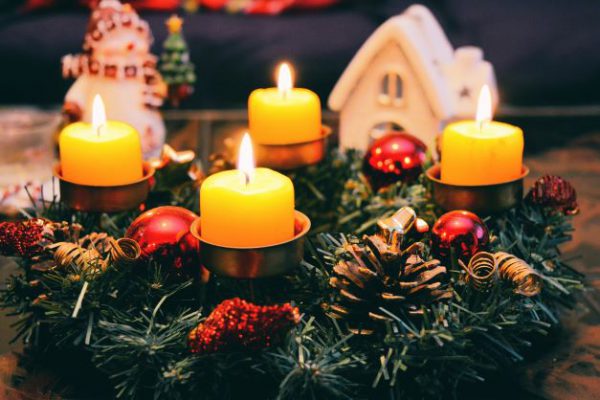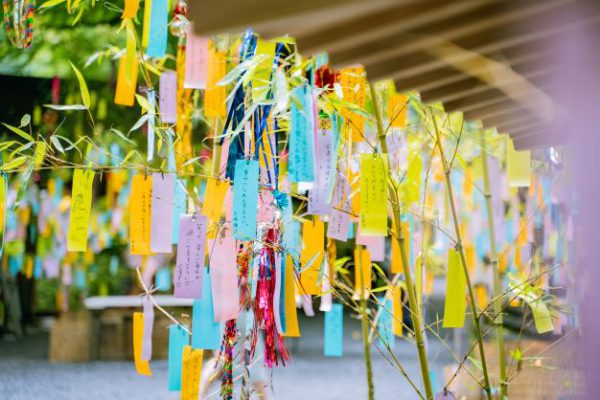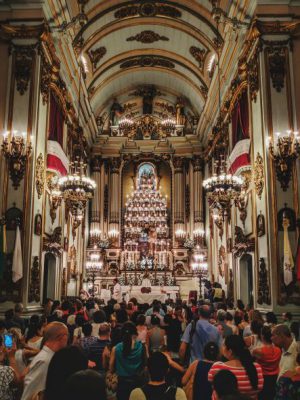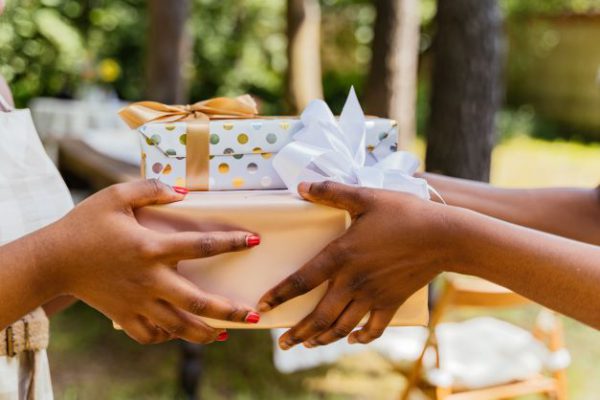Holiday Traditions
December 30, 2022
This entry continues to build on our December 15 post. You can view it here if you missed it. Today we start our exploration of cultures by looking at Germany.
In Germany, the holidays abound with a variety of traditions. One popular tradition is the laying of an Adventskranz (advent wreath). This wreath is decorated with four candles, representing the four advents or the four Sundays leading up to December 24. Every Sunday prior to Christmas Eve, a candle on the wreath is lit. The lighting of the first candle signifies the start of the Christmas season.

Once the Christmas festivities are over, Germans look forward to Silvester, named after the Catholic pope, Pope Silvester (314-335). This celebration takes place on New Year’s Eve. The New Year is rung in with sparkling wine and midnight fireworks. Another popular custom involves fortune-telling. Bleigiessen (lead pouring) is the ancient practice of predicting the future based on the shape of a piece of molten lead dropped into some cold water. Different shapes convey different meanings. For example, der Ball (a round, ball-like shape), means that good luck is on the horizon. der Anker (an anchor-like shape), means help in need, while das Kreuz (a cross-like shape) means death. Click here to view a video of this custom. Whether you have a chance to participate in this tradition or not, be sure to wish your German-speaking friends Frohe Festtage (Happy Holidays)!

Like in other cultures, in Japan the holidays are synonymous with quality time spent with family. For the Japanese, Christmas Day is a special day for couples, while New Year’s is a big event to celebrate with family. One New Year’s Day tradition involves eating a special soup called, お雑煮 (おぞうにozouni). It contains rice cakes, chicken and vegetables like radish, carrots, green onions, etc. The origin of this dish dates back to the 16th century, believed to be a meal the Samurais ate while in battle. Today, most Japanese believe the rice cakes signify longevity since it yields quite a lot. Want to try making a traditional ozouni soup? Check out this video.
If you’ve only just started learning Japanese, then you may find these holiday greetings useful. よい お年を(yoi otoshi wo), which is said before New Year’s Day to wish someone best wishes in bringing in the new year. On or after New Year’s Day, the expression used is あけまして おめでとう ございます (akemashite omedetou gozaimasu), which means Happy New Year!
Unsurprisingly holiday traditions in neighbouring Brazil also revolve around food. Like the local tradition of eating black eye peas, Brazilians eat lentils on New Year’s day. In their culture, lentil peas represent prosperity. Brazilians believe that people who eat lentils before any other dish on New Year’s Day will have a prosperous year. Our avid beach-goers may find this second tradition particularly appealing. Another popular holiday tradition in Brazil involves going to the seaside on New Year’s Eve. Brazilians try to jump seven waves, expressing a wish or gratitude with each jump. They believe this will help them more successfully accomplish their goals in the coming year. For more traditions check out this short article. Now, if you’ll be visiting our Portuguese-speaking neighbours in the coming weeks, you may find these holiday expressions useful: Feliz Natal (Merry Christmas) and Boas Festas (Happy Holidays).


Most Trinbagonians are familiar with the vestiges of Spanish culture gifted to us by our Venezuelan neighbours. But what about our other Spanish-speaking neighbours? For the foodies among us, the holiday festivities in Colombia and Ecuador may be particularly appealing. In both countries, the main event takes place on La Noche Buena (Christmas Eve). The Ecuadorian festive dinner usually includes stuffed turkey or roasted chicken. Some hornado de chancho (roasted pork leg, which is marinated in garlic and beer) is another popular dish. Regardless of the choice of protein, sides of rice, potatoes, salads, tamales and buñuelos are the norm. Typical beverages include wine or chichi (fermented corn beer). Once dinner is over, Ecuadorians attend misa de gallo (midnight mass) and end the night partying with friends and family. In Colombia, December 24th marks the end of the novena de aguinaldos (a nine-day religious ceremony). For the Catholic community, in Colombia, Ecuador and Venezuela, this 9-day period is a time for family and friends to get together to pray, eat and sing villancicos.
Like Ecuadorians, Colombians too, eat buñuelos around this time, but prefer to drink sabajón (a Colombian style eggnog) and hot chocolate. In both cultures, the infant Jesus is placed in the manger at midnight on Christmas Eve. Only then do they exchange gifts. So, if you plan to meet up with any native Colombians or Ecuadorians living in Trinidad or Tobago, remember to wish them Feliz Navidad and Prospero Año, especially on December 24th.
In one of our previous entries, we mentioned that Yoruba-speakers live in many different parts of the world. For example, Brazil, Cuba, Ghana, the Republic of Benin, Sierra Leone, and Togo, and Trinidad and Tobago. Like the Chinese, for Yoruba-speakers the holidays represent an opportunity to return to their hometowns to spend time with their family. Regardless of one’s system of beliefs, the holidays are a time to exchange gifts, cook special dishes and do some shopping. Some of the most popular dishes to enjoy during this time are, jollof rice, moinmoin, nkwobi, chicken stew, coleslaw, amala gbegiri and ewedu, ikokore, iyan and obe egusi. Some popular Yoruba greetings during the holidays are, Ẹ kú ìsimi (Enjoy your rest, since the holidays are a time to rest) Odun Aya abo (May the year bring you growth, development opportunities and blessings), and Ẹ kú Ọdún Ọdún àyabo (Happy New Year).

Interested in learning more about the cultures of the languages taught at the CLL? We will be happy to help you broaden your cultural understanding of others. Beginning in January 2023, our course offerings will include, Arabic, Mandarin Chinese, French, German, Japanese, Portuguese, Spanish and Yoruba. We will also continue to offer courses in English as a Second Language for speakers of languages other than English. Classes will be delivered either face-to-face or remotely via Zoom. Registration begins on January 3, 2023. For more information visit our website: Non-University Students | UWI STA Centre for Language Learning or email us: cll.fhe[@]sta.uwi.edu.
The Centre for Language Learning
The University of the West Indies
St. Augustine
Trinidad and Tobago
E-mail: CLL.FHE@sta.uwi.edu
Tel: (868) 662-2002 ext. 82524
Copyright © 2012-2024 |


